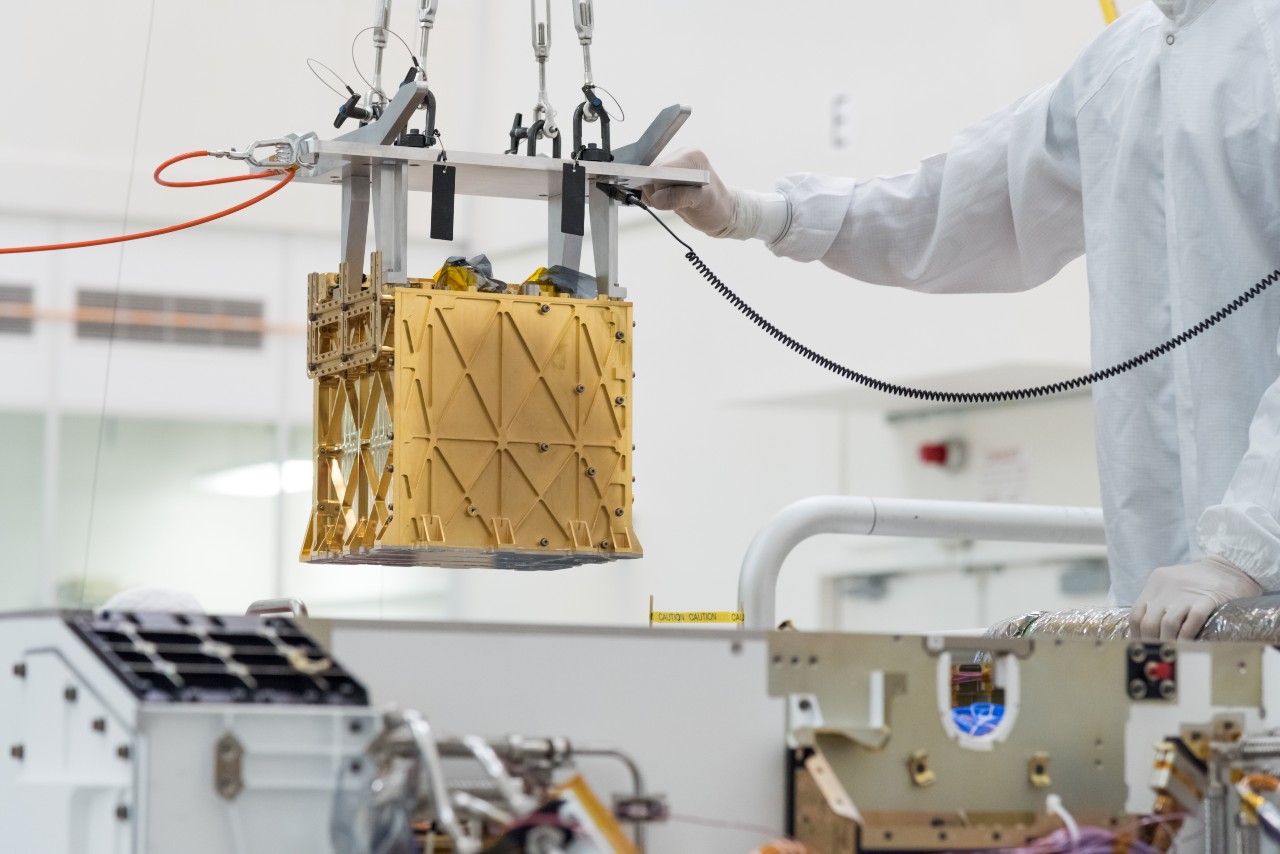Martian oxygen
How to turn the planet’s hostile atmosphere into something humans could breathe.
In April, thanks to an MIT-designed instrument, NASA’s Mars rover Perseverance achieved a remarkable milestone: it generated the first breathable oxygen on another planet.
The Martian atmosphere is about 95% carbon dioxide, but MOXIE (Mars Oxygen In-situ Resource Utilization Experiment), a small box-shaped device on board, converted it to oxygen through a technique called solid oxide electrolysis.

First the Martian carbon dioxide was compressed and filtered to remove any contaminants. It was then heated and separated into oxygen and carbon monoxide. The oxygen was isolated in a separate chamber, where the ions merged into oxygen gas, and the carbon monoxide was released back into the atmosphere. The test produced 5.4 grams of oxygen in an hour, and preliminary results suggested that it was nearly 100% pure.
“The first run of MOXIE is a step in the right direction to bring us closer to the possibility of human missions to Mars,” says Jeffrey Hoffman, a professor of the practice in the Department of Aeronautics and Astronautics, the project’s deputy principal investigator. Oxygen will be crucial not just for breathing but as a component of rocket fuel: according to principal investigator Michael Hecht, SM ’78, of the MIT Haystack Observatory, launching four astronauts off the Martian surface would probably require 25 metric tons of it.
Keep Reading
Most Popular
Large language models can do jaw-dropping things. But nobody knows exactly why.
And that's a problem. Figuring it out is one of the biggest scientific puzzles of our time and a crucial step towards controlling more powerful future models.
The problem with plug-in hybrids? Their drivers.
Plug-in hybrids are often sold as a transition to EVs, but new data from Europe shows we’re still underestimating the emissions they produce.
Google DeepMind’s new generative model makes Super Mario–like games from scratch
Genie learns how to control games by watching hours and hours of video. It could help train next-gen robots too.
How scientists traced a mysterious covid case back to six toilets
When wastewater surveillance turns into a hunt for a single infected individual, the ethics get tricky.
Stay connected
Get the latest updates from
MIT Technology Review
Discover special offers, top stories, upcoming events, and more.